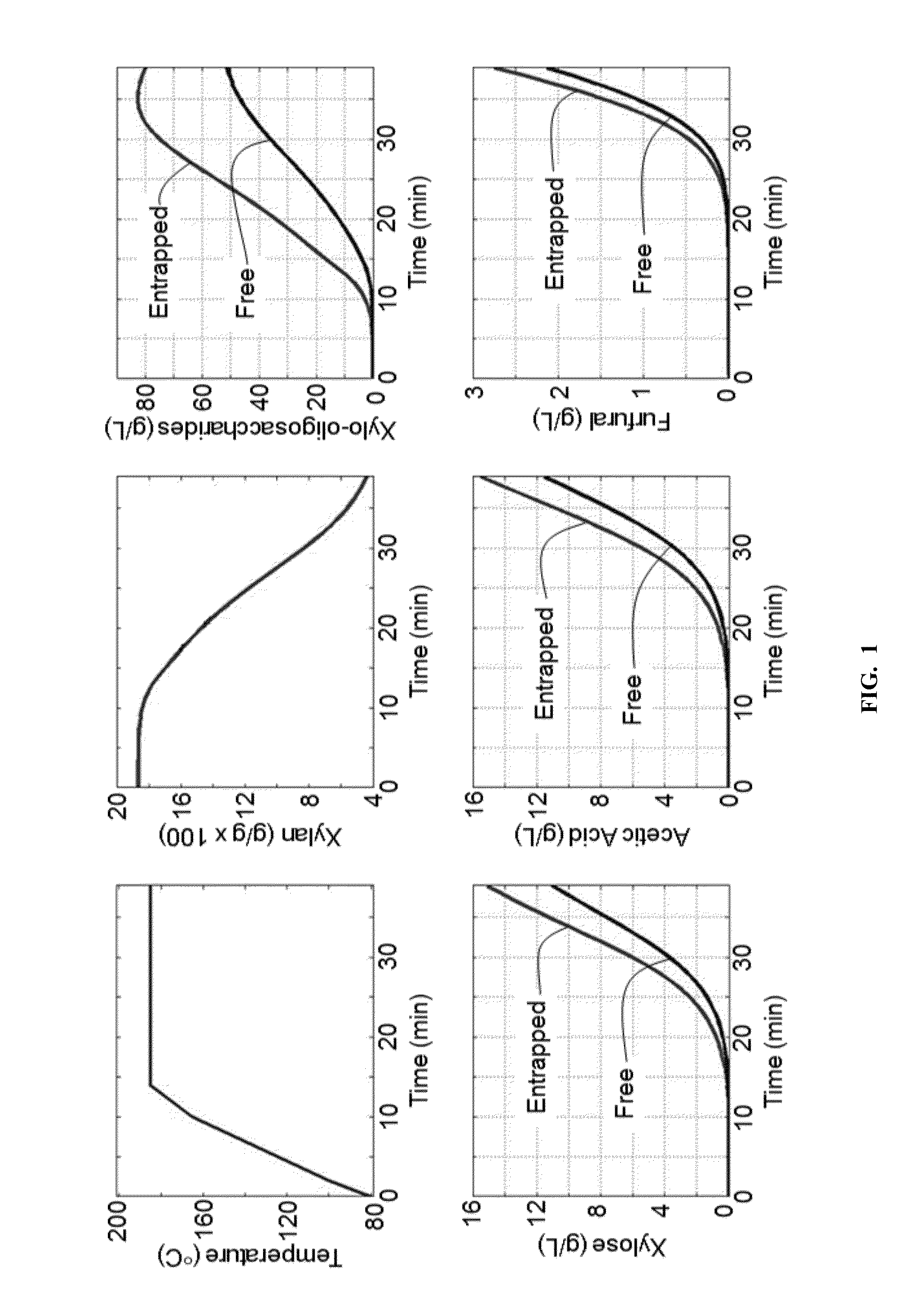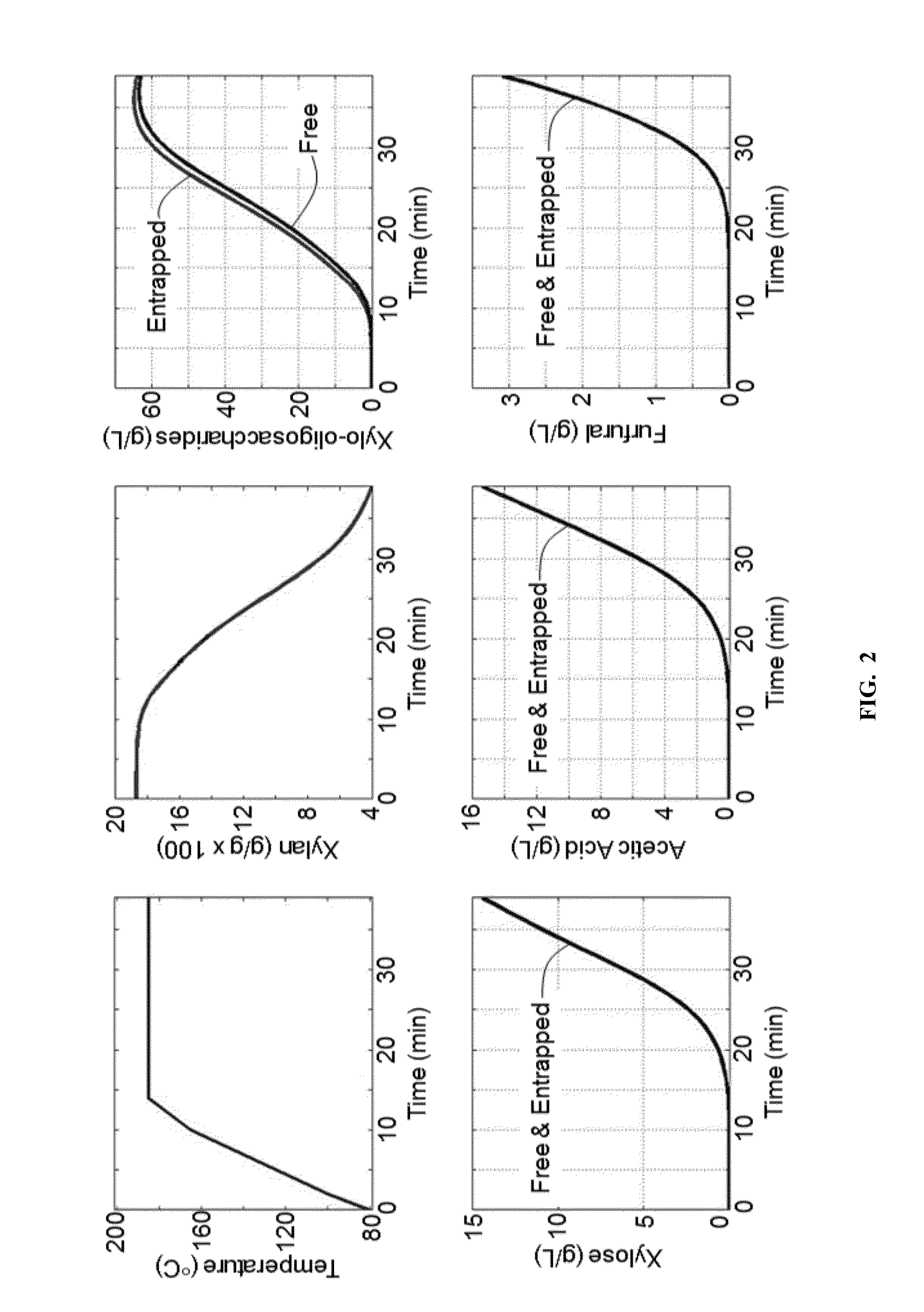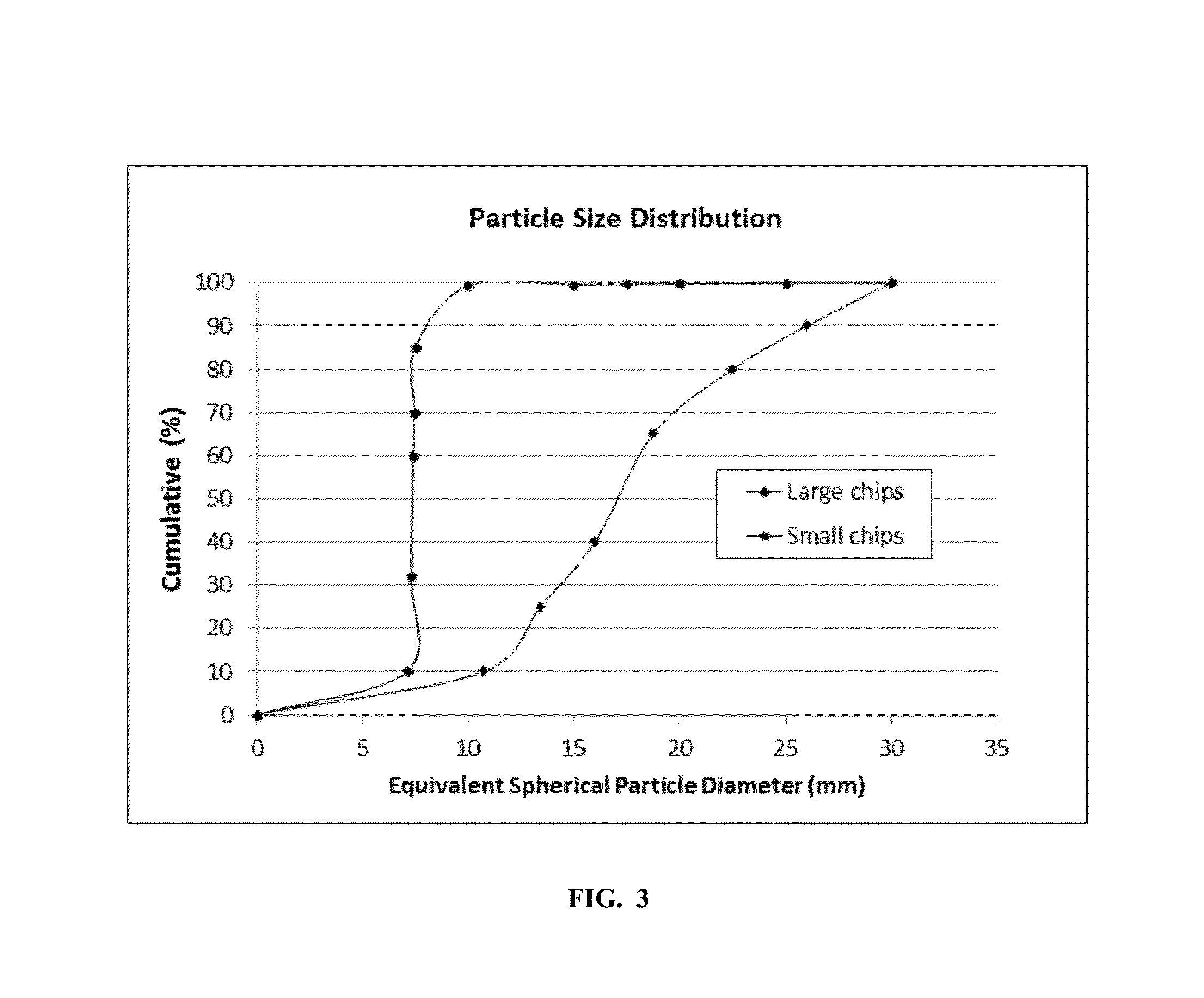Method for mixed biomass hydrolysis
a biomass hydrolysis and mixed technology, applied in the field of biomass hydrolysis, can solve the problems of high cost of process, no measures are taken to maximize the yield of sugar extracted, and significant challenges
- Summary
- Abstract
- Description
- Claims
- Application Information
AI Technical Summary
Benefits of technology
Problems solved by technology
Method used
Image
Examples
example 1
[0165]This example is a theoretical simulation that demonstrates the effect of biomass particle / chip size on the rate of xylose and xylo-oligosaccharide (XOS) formation, xylan conversion, release of acetic acid, and formation of furfural. The simulation employs reaction engineering and physical principles to simulate and mathematically model the hydrolysis of biomass. The simulation provides the overall hydrolysis rates for different species, and the simulation accounts, for example, for diffusion coefficients, particle size distribution, and intrinsic reaction rates.
[0166]In a first simulated experiment, a 2000 g batch of hardwood chips with a 50% moisture content were charged to a reactor along with 1500 g of water and auto-hydrolyzed (with no addition of exogenous catalyst). The addition of water brings the liquid-to-solid (dry basis) ratio to 2.5:1. The hardwood chips have the particle size distribution shown in FIG. 3 for the “large chips,” which distribution is also shown in T...
example 2
[0175]This example is a theoretical simulation that demonstrates the effect of biomass particle / chip size on the rate of xylose and xylo-oligosaccharide (XOS) formation, xylan conversion, release of acetic acid, and formation of furfural, for a biomass that has a slower intrinsic rate of xylan hydrolysis compared to the biomass of Example 1. The simulation is performed the same as in Example 1.
[0176]The two simulations in this example utilize the same input parameters as in Example 1 (e.g., biomass amount, moisture content, water amount, liquid-to-solid ratio, etc.), except the intrinsic rate of xylan hydrolysis for the biomass in this example is lower than the intrinsic xylan hydrolysis of the biomass employed in Example 1. The actual hydrolysis rates employed in the simulations for Examples 1 and 2 are not particularly important, but rather the simulations simply seek to demonstrate, for example, the differences in the formation of xylose, XOS, furfural, etc. due to a faster (Exam...
example 3
[0179]This example employs simulated data that demonstrates that two different biomasses having different intrinsic rates of xylan hydrolysis can be modified to result in apparent xylan hydrolysis rates that are similar.
[0180]FIG. 6 is a plot of the sum of xylose and XOS from the simulations shown in FIG. 1, FIG. 2, FIG. 4, and FIG. 5 from Examples 1 and 2. Curve A is the sum of xylose+XOS from FIG. 2 in Example 1 (i.e., Biomass 1 modified to a “small” size), Curve B is the sum of xylose+XOS from FIG. 1 in Example 1 (i.e., Biomass 1 modified to a “large” size), Curve C is the sum of xylose+XOS from FIG. 5 in Example 2 (i.e., Biomass 2 modified to a “small” size), and Curve D is the sum of xylose+XOS from FIG. 4 in Example 2 (i.e., Biomass 2 modified to a “large” size). As shown in FIG. 6, Curves B and C track one another quite closely, and therefore it is hypothesized that a mixture of Biomass 1 (“large”) and Biomass 2 (“small”) may hydrolyze at similar rates and therefore produce m...
PUM
| Property | Measurement | Unit |
|---|---|---|
| equivalent spherical diameter | aaaaa | aaaaa |
| particle size | aaaaa | aaaaa |
| temperature | aaaaa | aaaaa |
Abstract
Description
Claims
Application Information
 Login to View More
Login to View More - R&D
- Intellectual Property
- Life Sciences
- Materials
- Tech Scout
- Unparalleled Data Quality
- Higher Quality Content
- 60% Fewer Hallucinations
Browse by: Latest US Patents, China's latest patents, Technical Efficacy Thesaurus, Application Domain, Technology Topic, Popular Technical Reports.
© 2025 PatSnap. All rights reserved.Legal|Privacy policy|Modern Slavery Act Transparency Statement|Sitemap|About US| Contact US: help@patsnap.com



